Emerging Technologies Conference
Emerging Technologies Conference: 1 1/2 Days Pre-Conference education dedicated to Emerging Technologies in the textile industry, networking lunch and Emerging Technologies Networking Reception.
Also included: 3 days of Advanced Textiles Expo show floor access including 300+ exhibitors, all show floor education, equipment demonstration, Advanced Textiles Expo opening reception, next gen programming, women’s networking, ATA pitch fest and ATA textiles challenge.
Emerging Technologies Conference Registration includes all education listed below.
Advanced Textiles Expo
Check out the best of what the show floor has to offer: 3 days of Advanced Textiles Expo show floor access including 300+ exhibitors, all show floor education, equipment demonstration, Advanced Textiles Expo opening reception, next gen programming, women’s networking, ATA pitch fest and ATA textiles challenge.
Advanced Textiles Expo Registration does not include Emerging Technologies Conference.
Emerging Technologies Conference Content
Emerging Technologies Conference will cover a variety of important topics such as e-textiles, wearables, medical textiles, sustainability, applications and more! Sessions are taught by leading experts in the field. Learn more about the Emerging Technologies Conference here.
*Emerging Technologies Conference registration required
Show Floor Education Content
Advanced Textiles Expo show floor education features interactive sessions on the show floor covering emerging technologies, shade & weather protection, specialty fabrics, marine fabrication, general business and more!
NEW in 2024:
- Next Gen focused education & networking
- Women’s leadership session & networking
- ATA pitch fest
- ATA textiles challenge
*Included in all registration types
Education Schedule Coming Soon!
Submit a presentation for 2024 Advanced Textiles Expo.
|
Monday, September 23 |
|
| 9 am–5 pm | Emerging Technologies (ET) Conference - Hilton Anaheim - NEW Time |
| 5–6 pm | Emerging Technologies Networking Reception - Hilton Anaheim |
|
Tuesday, September 24 |
|
| 8–11 am | Emerging Technologies Conference - Hilton Anaheim |
| 10 am–3:30 pm | Show Floor Education |
| 9:30 am–3:30 pm | Show Floor Demonstrations |
| Noon–3 pm | Textiles Challenge Preview and Practice - NEW |
|
Wednesday, September 25 | Next Gen Takeover Day! |
|
| 9:30 am–3 pm | Show Floor Demonstrations |
| 10 am–12 pm | Next Gen Networking Session - NEW |
| 10 am–1 pm | Textiles Challenge Qualifying Rounds - NEW |
| 10 am–3:30 pm | Show Floor Education |
| 1–2:30 pm | Speed Networking Session - NEW |
| 2:30–4 pm | Textiles Challenge Finals - Championship Round - NEW |
|
Thursday, September 26 |
|
| 7–8 am | Women's Networking Walk - NEW |
| 9 am–12:30 pm | Show Floor Demonstrations |
| 9:30–11:30 am | Women's Leadership Session - NEW |
| 9:30 am–12:30 pm | Marine Fabricators Association (MFA) Roadshow |
| 10:30 am–12:30 pm | ATA Pitch Fest - NEW |
*ATA Disclaimer: Although every reasonable effort is made to provide the speakers, topics, and sessions listed, some changes or substitutions may occur. Speakers and sessions are subject to cancellation or change up to and including the day the session(s) are scheduled to be held. Changes or cancellations are made at the discretion of ATA and may be done without notifying attendees. If sessions are changed or cancelled no refunds should be expected. Agreement to attend Advanced Textiles Expo acknowledges acceptance of this provision.
Schedule coming soon!
Schedule coming soon!
 TEXTILES.ORG
TEXTILES.ORG


